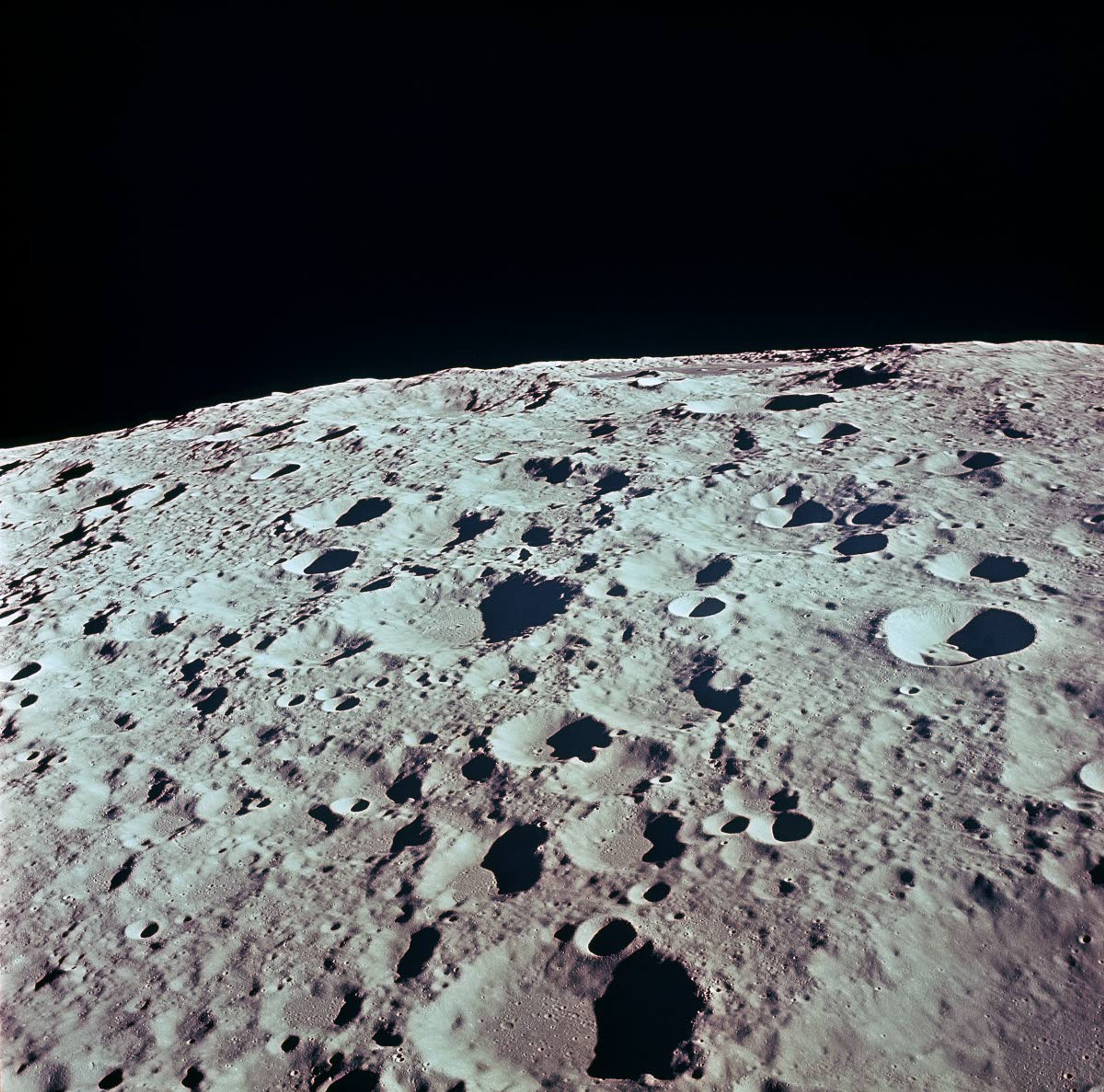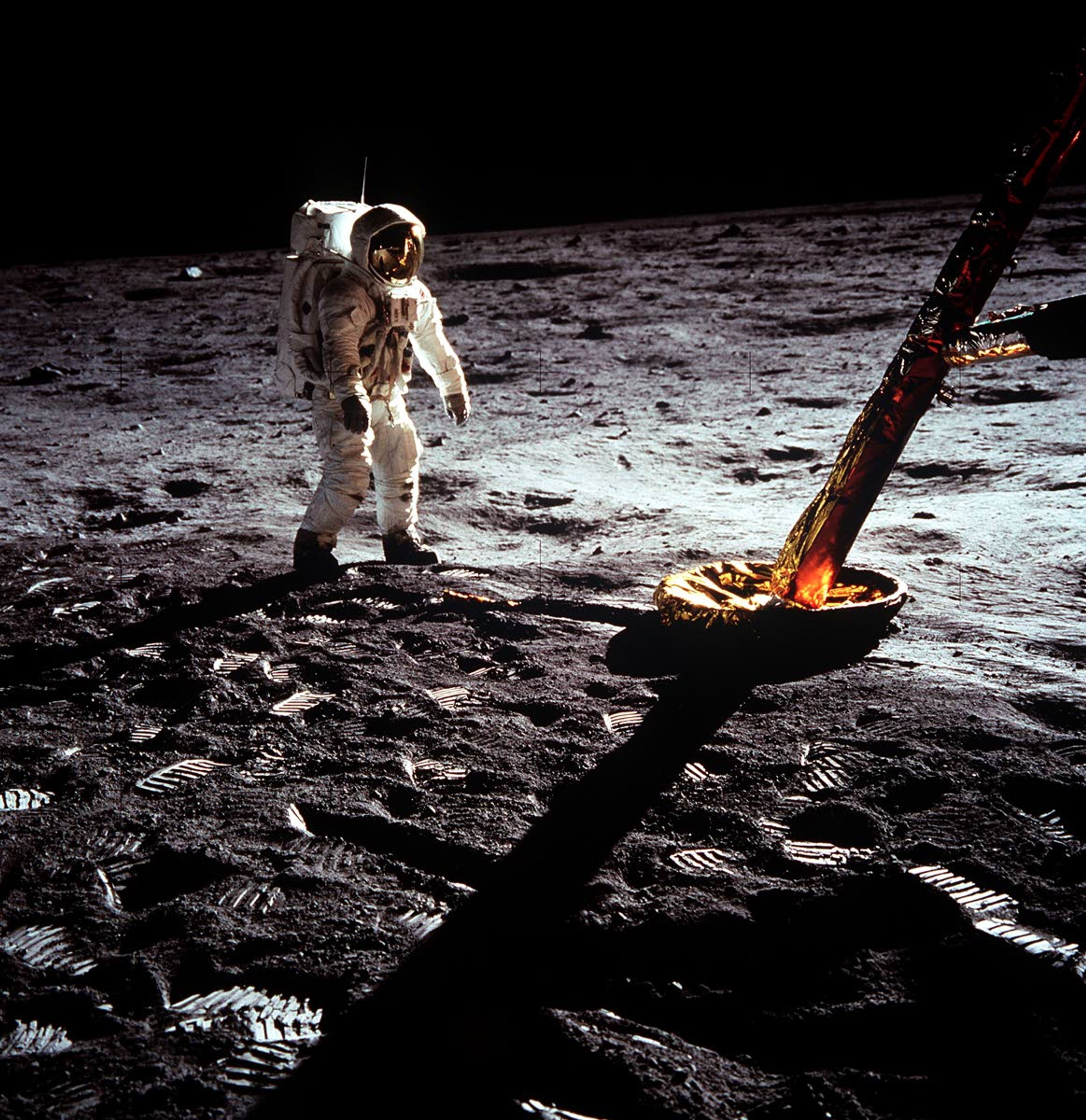When Apollo 11 astronaut Neil Armstrong took that one small step for man 50 years ago today, he contributed to a giant leap in mankind’s understanding of the moon and solar system.
Together with Edwin “Buzz” Aldrin, Armstrong collected nearly 50 pounds of rocks and soil during the 2 hours and 14 minutes they spent on the lunar surface. It was possibly the most productive — and most expensive — geological field trip of all time.
Other than meteorites found on Earth, researchers had never before had an opportunity to directly analyze extraterrestrial material. There was tremendous interest in the basalt rocks, breccias and anorthosite fragments Apollo 11 brought back, and rightfully so: They told an incredible story of planetary bombardments and magma oceans, “impact gardening” and the resurfacing of the entire moon.
“It’s definitely a dramatic story — one punctuated with dramatic events,” said Leslie Baker, chairwoman of the University of Idaho’s Department of Geological Science.
The big lesson from the Apollo missions, she said, was “the importance of impact structures.”
At the time, there was no consensus about how lunar craters formed. Some geologists thought they were the result of meteor impacts, but others favored volcanoes, which also create circular structures.
Fewer than 100 impact craters had been identified on Earth, Baker said, “so it was logical to think maybe they weren’t very important. A lot of people thought (the impact hypothesis) was crazy. There was a lot of resistance to it — and might still be, if not for the Apollo missions.”
The lunar breccias helped clinch the debate, she said. They’re made from fragments of other rocks that are broken and then cemented back together.
“To form them, you need something really high-energy to shatter the surface,” Baker said.
Lunar breccias are made from a variety of rock types, and some of the clasts or fragments are themselves other breccias, she said. That led to the concept of “impact gardening,” where an initial breccia made during one ancient impact is subsequently broken apart by a second impact and incorporated into the next-generation breccia — which is then broken apart and incorporated into a third.
“These rocks look like nothing ever seen before in a terrestrial context,” Baker said. “The entire surface was being rototilled with repeated, high-energy explosions, with lateral mixing over time. You could collect a rock from one location and end up with fragments from all over the place.”
Because there’s no atmosphere, lunar rocks also contain “zap pits,” which are tiny holes left by micro-impacts. That’s another feature that isn’t found on Earth, because of the constant erosion.
The oldest moon rocks formed about 4.4 billion years ago. Most rocks found on Earth, by contrast, are younger than 4 billion years; older material has largely been eroded or recycled by geological processes.
“Earth is like a book where someone ripped the whole first chapter out,” Baker said.
She noted that most of the lunar breccias brought back by the Apollo missions are about 3.8 billion to 4 billion years old. That was a period referred to as the Late Heavy Bombardment, when the pace of meteor impacts in the solar system increased.
When the solar system formed, there was lots of debris flying around in different orbits. Smaller pieces collided to form larger pieces, which attracted even more fragments and eventually created planets.
As these newly formed planets swept up debris and cleared out their orbits, the number of impacts should have died down over time. Instead, the Late Heavy Bombardment showed a spike in impacts for a period of a few hundred million years.
“It hasn’t been fully explained,” Baker said. However, it may have resulted from a reshuffling in the outer solar system that perturbed orbits, flinging asteroids in toward the inner planets.
Another clue regarding the origin of the moon and the geology of the early Earth came when Armstrong added several scoops of loose soil to his rock sample bag.
The soil contained fragments of anorthosite, a low-density igneous rock that’s plentiful on the moon, but relatively uncommon on Earth.
In a July 6 story in the New York Times, Apollo 17 astronaut Harrison Schmitt — the only geologist to ever walk on the moon — said within six months of the Apollo 11 mission, researchers used those anorthosite samples to develop the concept of a magma ocean. It’s the idea that, at one time, the entire surface of the moon was molten rock.
“The phrase ‘magma ocean’ didn’t exist until Apollo 11,” Schmitt said, and it eventually led to the theory that the moon formed from a gigantic collision between Earth and a Mars-size proto-planet.
Baker noted that anorthosite is less dense than the magma from which it forms, so it floats to the top. Much of what we see when we look at the moon today is bright ridges and mountains of anorthosite that formed in that magma ocean.
“Earth probably went through the same stage,” she said. “Without those Apollo rocks, the whole magma ocean idea would be in question.”
Although much of her own research has focused on Martian geology, Baker did graduate work at Brown University with Jim Head, who helped train the Apollo astronauts in geology.
While there, she had an opportunity to work with “thin sections” of the Apollo moon rocks. These are samples that are sliced so thin they can be mounted on a slide and viewed through a microscope.
Given the limited availability of moon rock, NASA is very particular about releasing samples to researchers, Baker said. “You have to write a proposal and explain what you want to do and why it’s important enough that they should give you any samples. Then they send you just enough to do the work.”
The agency also has sets of slides they send to schools for educational purposes. That’s what she worked with.
“It was my first assignment as a teaching assistant,” Baker recalled. “I was so nervous I focused down too far and broke the slide. I thought guys in dark glasses were going to come and take me away.”
Although the Apollo missions collected samples from only six different locations, they provided enough information that, 50 years later, detailed geological maps have been created of the entire lunar surface, highlighting dozens of rock types and features.
“We can tell what minerals are at the surface (based on spectrometer readings), but the only reason we can interpret that data is because of information we got from the actual, physical samples,” Baker said. “It’s amazing what you can tell from a few pounds of rocks.”
———
Spence may be contacted at bspence@lmtribune.com or (208) 791-9168.
IN SUNDAY’S TRIBUNE: More on the 50th anniversary of the Apollo 11 moon landing












